Women's Needs Assessments
The DWC Women’s Needs Assessment is a community-based research project conducted by the Downtown Women’s Action Coalition every three years since 2001. Each report surveys the needs, characteristics, and conditions facing homeless and extremely low-income women living in Los Angeles
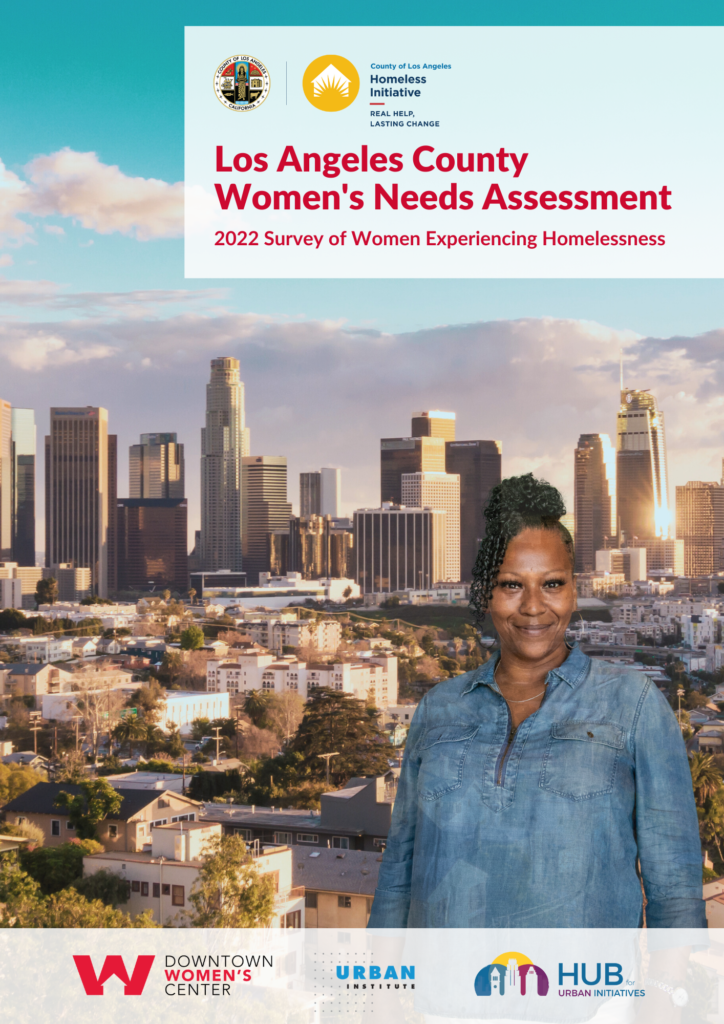
2022 Women’s Needs Assessment
Women experiencing homelessness as individuals—those who are not accompanied by or seeking services with a partner, children, or other dependents—are a growing population in Los Angeles County and nationally. In Los Angeles County, these women make up 68 percent of all women experiencing homelessness and 20 percent of all individuals experiencing homelessness. Prior research has highlighted the challenges and negative outcomes that women experiencing homelessness face. In recognition of the growing population of women experiencing homelessness and their needs, the City and County of Los Angeles passed resolutions naming women a unique subpopulation of people experiencing homelessness, and the County Homelessness Initiative, in partnership with the Downtown Women’s Center (DWC), engaged the Urban Institute and the Hub for Urban Initiatives to conduct the first countywide women’s needs assessment to answer key questions around demographics, experiences, and needs and preferences related to housing, shelter, and services for women experiencing homelessness in Los Angeles County.

2019 Women’s Needs Assessment
In the past few years, Los Angeles has experienced a dramatic surge in homelessness, expanding beyond Skid Row to every neighborhood in the city. As homelessness has increased, there has been a disproportionate impact on women; from 2013 to 2019, there was a 41% increase in homeless women. With more women than ever experiencing homelessness for the first time, the Downtown Women’s Center (DWC) sought to understand city-wide needs that homeless and extremely low-income women face.

2016 Women’s Needs Assessment
Since 2001, the Downtown Women’s Action Coalition (DWAC) has administered 1,687 surveys, providing crucial demographic information, population trends, and indicators of need for service providers, policy makers, and the general public. This report includes longitudinal analysis of past surveys, along with conclusions from the 371 surveys collected in 2016. Information gathered from the surveys is split into five main sections: Demographics, Housing, Healthcare, Violence Against Women, and Community Resources
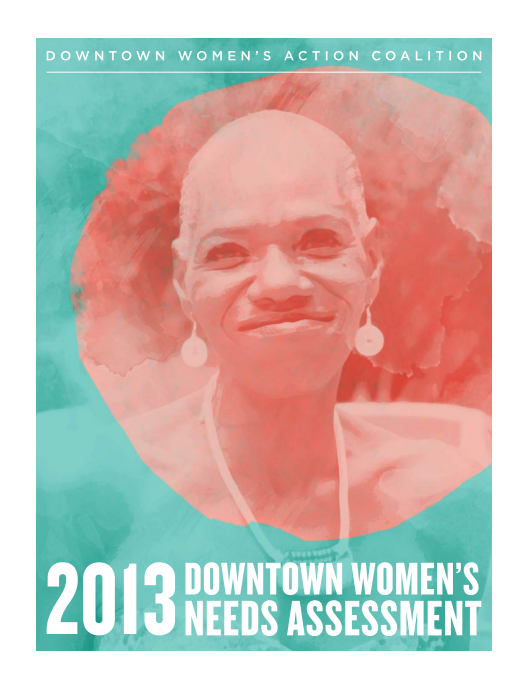
2013 Women’s Needs Assessment
The 2013 Downtown Women’s Needs Assessment, a community-based research project, is the fifth in a series of surveys focusing on the needs, characteristics, and
conditions facing homeless and other very low-income women living in downtown Los Angeles. Since 2001, the Downtown Women’s Action Coalition (DWAC) has administered 1,316 surveys, providing helpful demographic information, population trends, and indicators of need for service providers, policy makers, and the general public.
This report includes longitudinal analysis of past surveys, along with conclusions from the 324 surveys collected in 2013. Information gathered from the surveys is split into
five main sections: Demographics, Housing, Healthcare, Violence Against Women, and Community Resources.
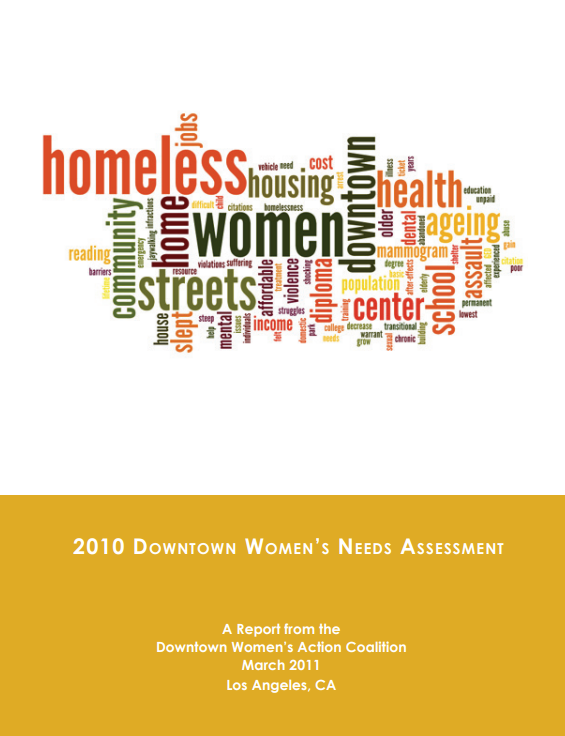
2010 Women’s Needs Assessment
As the fastest growing segment of the homeless population in the United States, women face unique challenges and barriers. Nowhere is the issue of homelessness more critical and transparent than in Los Angeles’ Skid Row community. As the hub of transient communities in the United States, Los Angeles has become what many refer to as the capital of homelessness in America. Of this population, perhaps the most underserved and overlooked segment are homeless, formerly homeless, and very low-income women. With rising pressures of the recession, homeless women are finding themselves in increasingly desperate and undignified situations.

2007 Women’s Needs Assessment
The Downtown Women’s Action Coalition (DWAC), formed in 2001, consists of service providers, advocates, and downtown residents whose initial focus was to seek immediate emergency relief for homeless single women but, since that time, has been working collaboratively to promote both short and long-term changes to improve the health and safety of women living downtown. The number of homeless and very low-income women living in Skid Row has gradually but steadily increased since 2000, in a community primarily designed to serve single, adult men. Housing and services for women with or without children have not expanded nearly enough to serve the growing and changing needs.
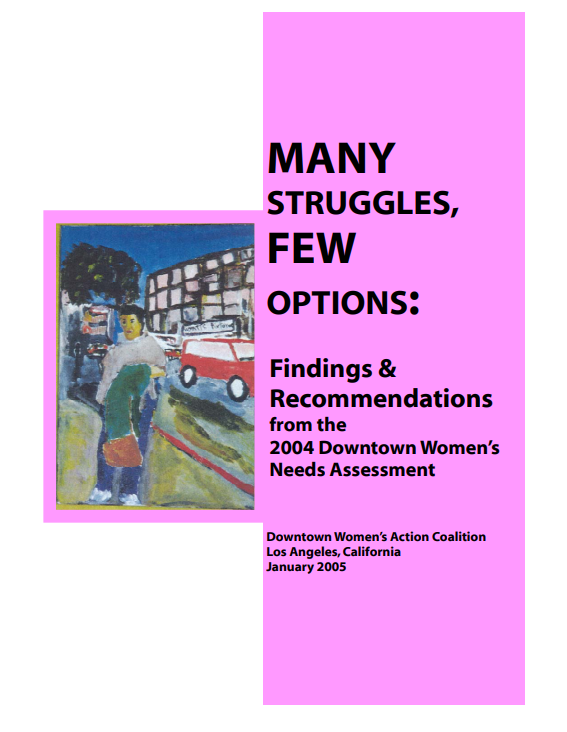
2004 Women’s Needs Assessment
The Skid Row/Central City East area of downtown Los Angeles continues to grapple with a severe crisis due to three interrelated trends: 1) the continually growing number of women and children in the area; 2) the shortage of both emergency and affordable, permanent housing within the downtown community and throughout Los Angeles County; and 3) the lack of political will locally, regionally and nationally to expand resources for affordable housing and supportive housing to a level that would address the great need. The number of homeless single women and families living in Skid Row has dramatically increased in the past several years, but housing and services have not expanded nearly enough to serve the growing need.
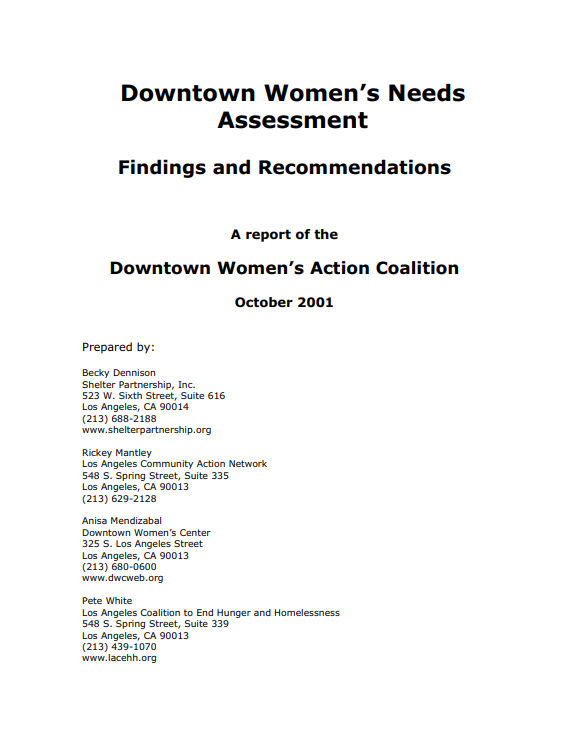
2001 Women’s Needs Assessment
There is currently a crisis for women in the Skid Row/Central City East area of downtown Los Angeles due to the lack of both emergency and affordable, permanent housing throughout Los Angeles County. The number of homeless single women and families living in Skid Row has dramatically increased in the past several years, with a daily influx of new families. Many women are coming to Skid Row as a last resort because it is the only area in Los Angeles with 24-hour emergency housing and services, although the area is extremely dangerous for women and unsuitable for young children. In addition, Skid Row is one of the few areas with a stable supply of affordable housing, although revitalization efforts and gentrification now threaten the affordable housing stock
